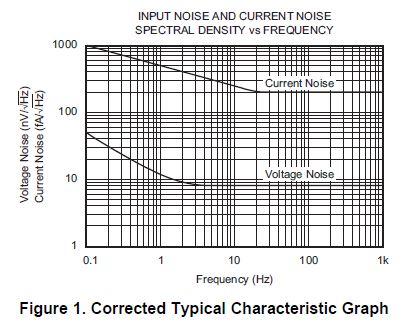Hi!
I'm having a 10Hz system using the the OPA277 amp.
I the ds the voltage noise is specifyed as:
Input Voltage Noise, f = 0.1 to 10Hz 0.22uV PP and 0.035u Vrms
If i look at the "INPUT NOISE AND CURRENT NOISE SPECTRAL DENSITY vs FREQUENCY" the noise up to 10Hz is dominated by the 1/f and the graph shows the noise density @1Hz ~ 50nV
I'm for 1/f noise learned to use the equation en1/f = (e1/f@1Hz)(√[ln(fH/fL)]) use fH = 10Hz; f L= 0.1Hz
en1/f = (50nV)(√[ln(10Hz/0.1Hz)]) = 107nVrms
....which is much larger than the 0.035nVrms given in the ds?
Where do i go wrong?
Many thanks
/Mattias


